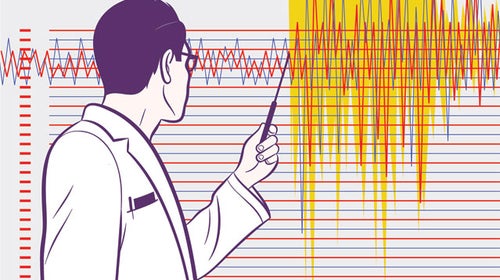Why can’t we create plants that trap CO2 permanently? Why can’t we just mount solar panels to our cars instead of using gasoline? Our writers break down these and three other solutions to our environmental woes.
WHY CAN’T WE…
Divert floodwater to drought regions?
Take sunscreen in a pill?
Drive cars equipped with solar panels?
Predict earthquakes?
Genetically modify plants to eat up CO2?
Why Can’t We: Divert Floodwater to Drought Regions
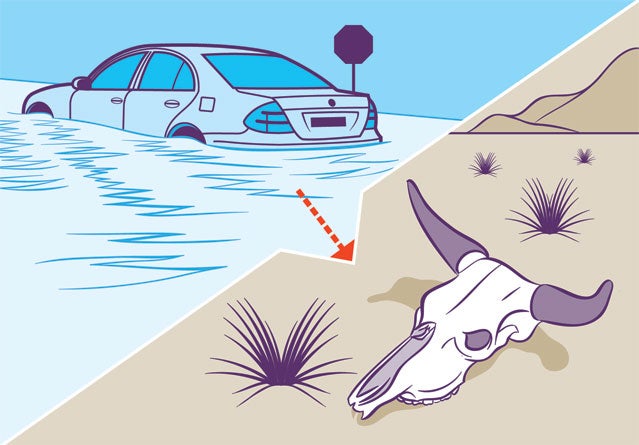
Sounds sweet. Instead of letting the Mississippi River overflow its banks, how about sending a few billion gallons to the parched Southwest? The first barrier is the environment. Flooding regenerates farmland and cues fish to spawn, says Taylor Hawes, the Nature Conservancy’s program director for the Colorado River. There’s also the issue of invasive species infiltrating river systems. You really want to see Asian carp in the Grand Canyon?
Then there’s politics. East of the 100th meridian, it’s generally illegal to divert water from one basin to another, a fact that has prevented always-thirsty Atlanta from tapping the Tennessee River (which doesn’t enter Georgia). Even if laws were changed, politicians tend to protect their water sources. Grand County, Colorado, for example, home to the Colorado River’s headwaters, is grappling with a proposal to divert as much as 85 percent of its flows to Denver and the Front Range.
The biggest problem: cost. One proposal, floated in 2009 by Colorado rancher and mining engineer Gary Hausler, would create a pipeline from the Mississippi to the Colorado at an estimated $22.5 billion. That’s just to build the thing. You’d also have to factor in the annual cost, in money and energy, of pumping huge amounts of water uphill for roughly 1,200 miles.
But, says Southern Nevada Water Authority spokesman J. C. Davis, whose group has its own plans for less audacious regional diversions, “I bet if you went back and asked people about building a coast-to-coast highway system, they’d have mocked that, too.”
Why Can’t We: Take Sunscreen in a Pill

While humans can’t pop a capsule to protect our cells from UV damage, it could happen someday if scientists can figure out a natural process that occurs with many forms of ocean coral. Since the 1960s, researchers have been examining a symbiotic relationship between coral and certain types of sea algae, which provide amino acids that intercept UV light and dissipate it as heat.
Such compounds would be “the ideal form of sunscreen,” says Malcolm Shick, professor of marine sciences at the University of Maine. In lab experiments using red algae and smooth cauliflower coral, Shick’s team discovered that the effects of these compounds, known as mycosporine-like amino acids (MAAs), were passed up the food chain to fish and urchins, protecting them from UV damage, too. This got scientists thinking that sun-fighting MAAs could be absorbed by humans through diet.
Unfortunately, it isn’t that simple. “I ate an awful lot of sushi containing the compounds,” says Shick, who gorged for months on MAA-rich fish and seaweed. “Then I biopsied myself, but there was nothing there.” More scientific trials with mice came up negative as well, leading researchers to speculate that stomach acids may break the aminos down before they’re absorbed.
More recently, researchers at King’s College London have been working to find a way to deliver the substance in a coated pill. There are still plenty of hurdles, not least of which is how to synthesize enough MAAs in the first place. If all goes well, human testing could begin within two years.
Why Can’t We: Drive Cars Equipped with Solar Panels
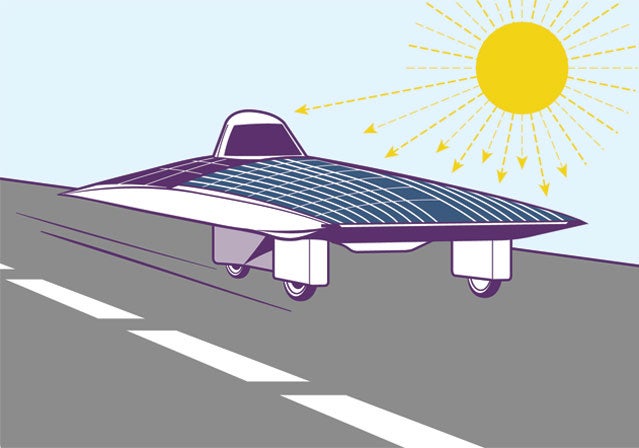
Solar cars do exist—mostly in the form of impractical racing machines developed by university organizations to compete in renewable-energy challenges.
The problem with these bizarre-looking rides is that they’re practical only in ideal circumstances. Says George Hansel, aerodynamic-design leader of MIT’s Solar Electric Vehicle Team: “If we took our solar car and used it as a commuting vehicle in Albuquerque, New Mexico, where speed limits are 40, it’s usually sunny, and you’re rarely driving more than 200 miles a day, you’d have a very light one-person commuter vehicle that would essentially run all the time.” This, he calculates, would require about 65 square feet of solar panels.
But it wouldn’t work well outside the city, where faster speeds mean increased reliance on battery packs. At that point, you may as well take the solar panels off the car, put even larger ones on a building—where they can be pointed in a more effective direction and are less susceptible to damage—and use that energy to charge an electric car that could run rain or shine.
The alternative would be producing a car with a solar array the size of a trailer-truck roof: for every gallon of gasoline a car consumes to travel 100 miles on the highway, the equivalent solar version would require 375 square feet of panels. Good luck parking that puppy.
Why Can’t We: Predict Earthquakes
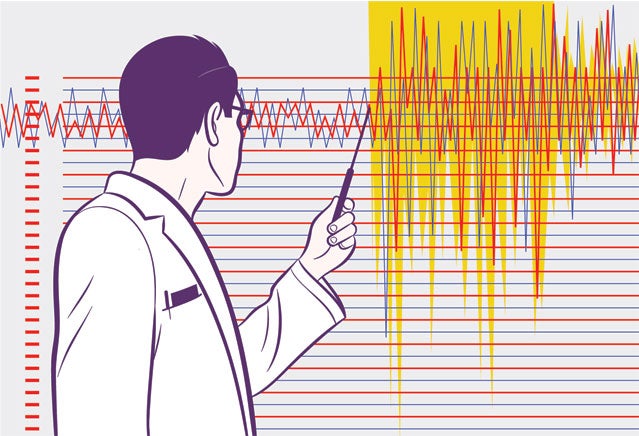
Because we don’t know enough about plate tectonics. “We basically have a 50-year-old science, compared with most other sciences, which are hundreds of years old,” says Chris Goldfinger, director of the Active Tectonics and Seafloor Mapping Laboratory at Oregon State University. “We’re pretty low along the learning curve, and the most elusive thing of all is prediction.”
A few methods are in the works, such as using historical records to identify quake timing patterns. Alas, the records are too recent. Some earthquake cycles span thousands of years; in most places, geologists have only 100 years of hard data.
Another option is to detect a precursor to an earthquake, like a change in groundwater levels, electromagnetic energy, or wildlife behavior. “We keep catching glimpses of things after the fact and going, ‘Hey! Do that again somewhere,’ ” Goldfinger says. So far, nothing has emerged as a verified quake predictor because no early-warning signs have been repeated.
Option three is to study how stress is transferred between earthquakes, since it’s known that when a quake occurs, destructive energy is transferred to nearby faults. Geologists still can’t say if a fault will go off tomorrow, but they can say that its chances of failure have increased.
Since we aren’t there yet—and may never be—science’s best advice remains: Be ready. “Even though paleoseismology hasn’t yet answered the $64,000 question, it does help people do the much more practical thing, which is to prepare for a quake when it does happen,” Goldfinger says. “Have it be a bad day instead of a catastrophe.”
Why Can’t We: Genetically Modify Plants to Eat Up CO2
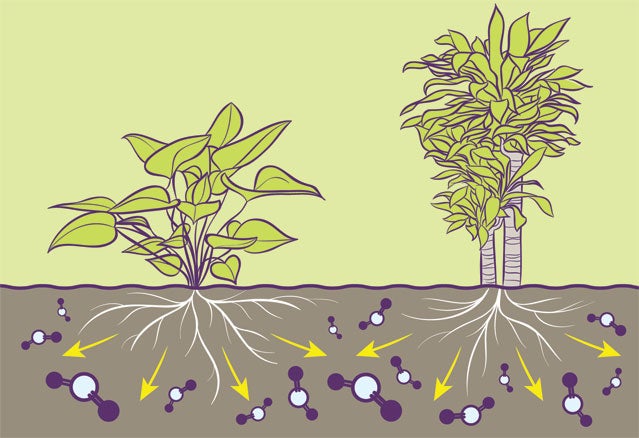
Plants take in a lot of CO2 and release a lot of oxygen. And while they’re doing this good deed, they trap carbon for the life of the plant. But when, say, a huge tree falls over and dies, that carbon is released into the atmosphere. Scientists want to figure out how to lessen the effects of climate change by engineering plants to keep carbon locked away postmortem.
According to Christer Jansson, a senior staff scientist at Lawrence Berkeley National Laboratory in California, the best way to do that is to give plants deeper roots. “Anything more than two feet transfers the carbon into the soil for long-term sequestration,” says Jansson. “If it’s left undisturbed, that’s where it will stay for as long as a millennium.” The best candidates are widespread shallow-rooted crops—corn, rice, and grasses used in the production of biofuel—which would be modified to soak up the carbon that deforestation and the burning of fossil fuels release into the atmosphere.
Experiments with enhancing CO2 uptake are under way, and Jansson believes that by 2050 engineered plants could sequester all eight-plus gigatons of carbon that humans are responsible for each year. The idea is promising, says Rattan Lal, director of Ohio State University’s Carbon Management and Sequestration Center, but perhaps not entirely sufficient. “Because the problem is so vast, we’re going to need hundreds of solutions to bring carbon back to preindustrial levels. Genetically engineered plants is just one.”
